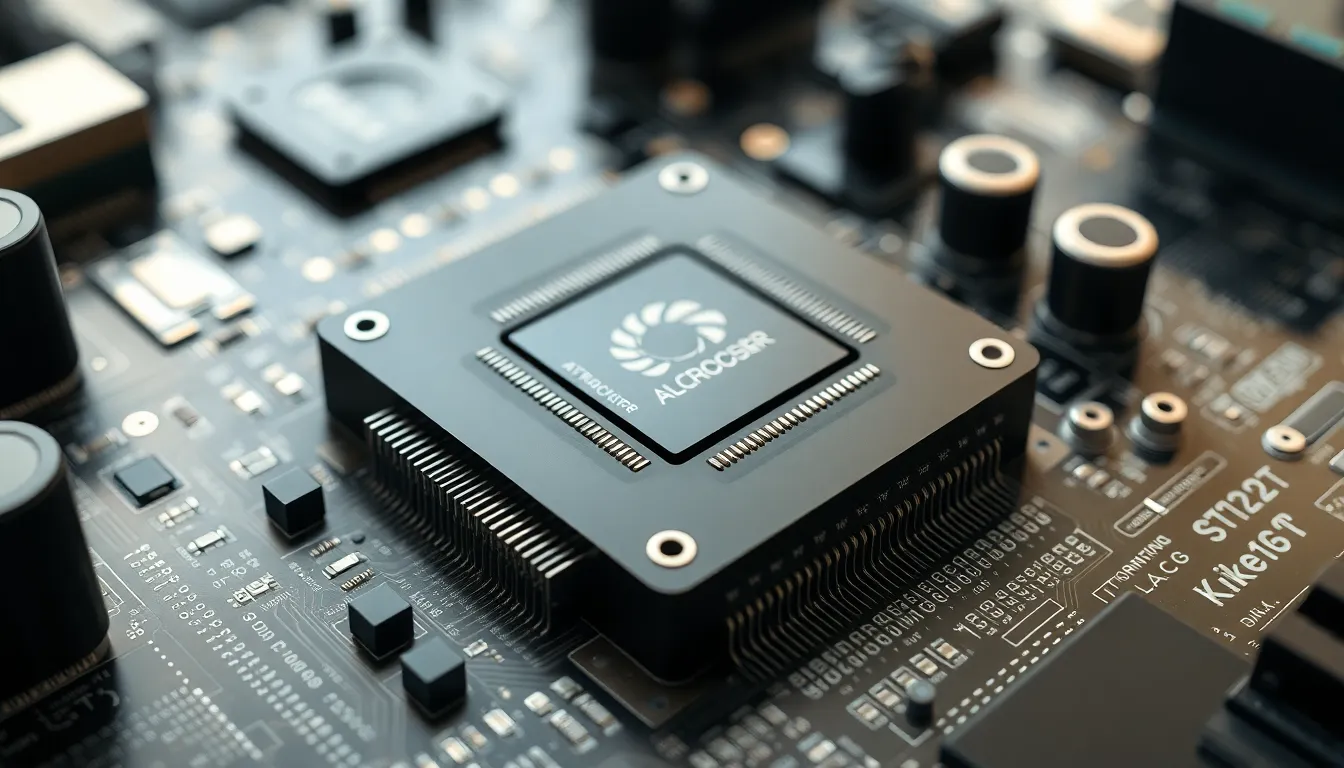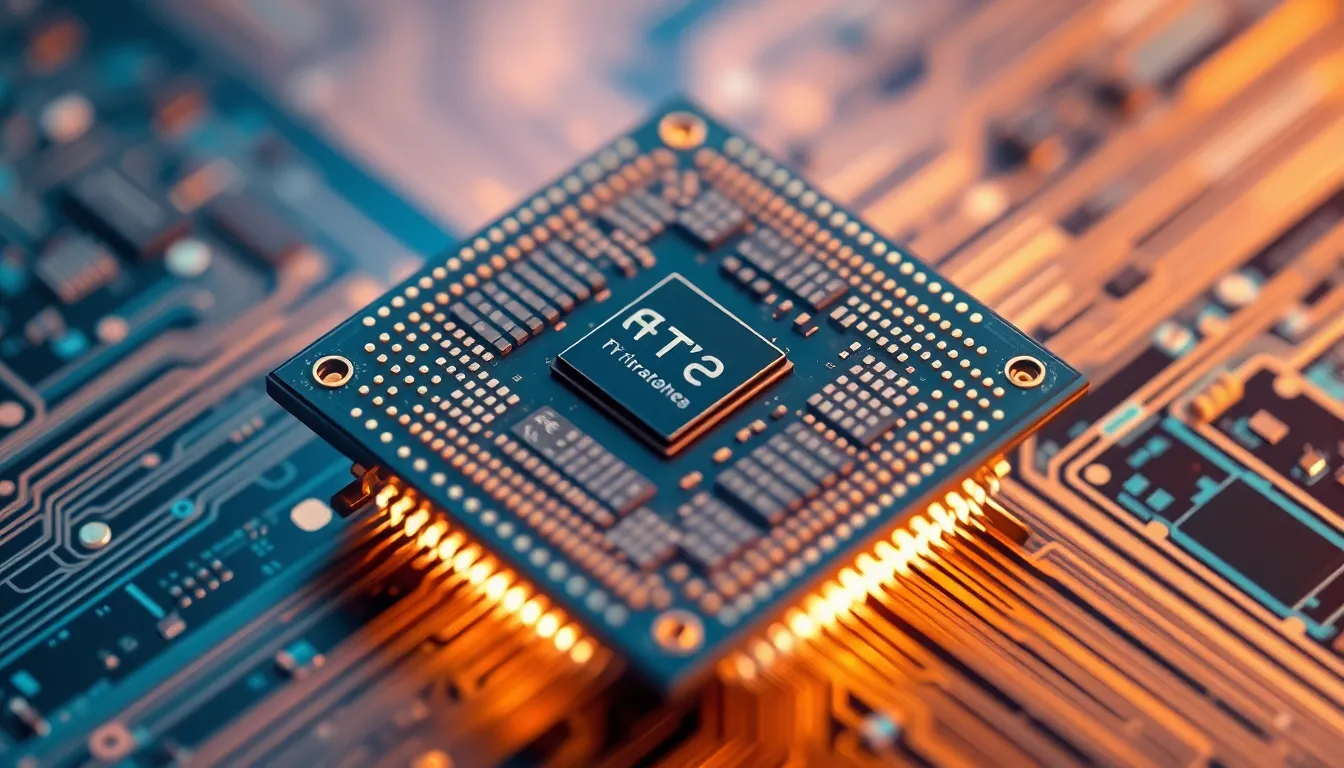In today’s fast-paced digital world, multicore processors have become the backbone of modern computing. These powerful chips, which house multiple processing units on a single die, enable devices to perform complex tasks with remarkable efficiency. As software demands grow, multicore technology plays a crucial role in enhancing performance, multitasking capabilities, and energy efficiency.
From smartphones to supercomputers, multicore processors are revolutionizing how users interact with technology. They allow for smoother gaming experiences, quicker data analysis, and improved overall system responsiveness. Understanding how these processors work and their benefits is essential for anyone looking to stay ahead in the tech landscape.
Table of Contents
ToggleOverview of Multicore Processors
Multicore processors contain multiple processing units, or cores, within a single chip. These cores collaborate to enhance processing capabilities, allowing simultaneous execution of tasks. Most modern desktops, laptops, and mobile devices utilize multicore technology to improve speed and efficiency.
Key Features of Multicore Processors
- Parallel Processing: Multicore processors enable parallel execution of instructions. This capability accelerates data processing in tasks like gaming, video editing, and running applications.
- Improved Multitasking: Users can run multiple applications concurrently without significant performance degradation. The ability to allocate different tasks to different cores improves overall system responsiveness.
- Energy Efficiency: Multicore processors operate at lower clock speeds while sharing workloads among cores. This design reduces power consumption compared to single-core processors at high speeds.
Applications of Multicore Technology
- Consumer Electronics: Smartphones and tablets benefit from multicore architecture to manage resource-intensive applications, enhancing user experience.
- Gaming: Enhanced graphical and processing capabilities improve gameplay. Multicore processors handle sophisticated graphics and AI computations effectively.
- Cloud Computing: Multicore processors serve as the backbone for efficient server operations. They support virtualization and manage multiple clients simultaneously.
- Scientific Computing: High-performance computing tasks, such as simulations and complex calculations, leverage multicore technologies to achieve faster results.
Understanding multicore processors is essential for navigating advancements in technology. Their widespread application across various fields marks a significant shift toward more efficient computing environments.
Benefits of Multicore Processors

Multicore processors offer significant advantages, enhancing the performance and energy efficiency of modern computing devices. These benefits cater to various applications, making multicore technology integral to contemporary systems.
Enhanced Performance
Enhanced performance arises from the ability of multicore processors to execute multiple tasks simultaneously. Each core operates independently, allowing for parallel processing, which significantly accelerates data handling. Applications such as gaming, video editing, and 3D rendering see substantial improvements, as tasks distribute across cores, reducing bottlenecks. For instance, multicore processors can manage real-time graphics rendering while simultaneously processing user inputs, maintaining smooth performance. Performance metrics show that systems integrating multicore technology can achieve performance increases up to 300% compared to single-core processors, transforming user experiences in demanding environments.
Energy Efficiency
Energy efficiency becomes a crucial benefit when considering the operational characteristics of multicore processors. These processors can perform complex tasks at lower clock speeds, conserving power while delivering high performance levels. By optimizing workloads and distributing tasks among cores, multicore processors minimize energy consumption. For example, research indicates that multicore systems can cut energy use by 30-50% in comparison to their single-core counterparts at equivalent performance levels. This efficiency not only leads to longer battery life in portable devices but also reduces overall operational costs in data centers and enterprise environments.
Architecture of Multicore Processors
Multicore processors utilize a sophisticated architecture that includes multiple processing units, known as cores, on a single chip. This design enables enhanced performance, energy efficiency, and multitasking capabilities in various computing environments.
Core Design
Core design in multicore processors involves the arrangement and functionality of individual cores. Each core is capable of executing instructions independently, allowing parallel processing to occur. Typical designs include homogeneous cores, which are identical in capabilities, and heterogeneous cores, where cores have different performance characteristics, enabling increased flexibility and efficiency in handling diverse workloads.
Multicore processors often feature cores optimized for specific tasks. For example, some cores may prioritize high performance for demanding applications, while others may focus on energy efficiency for lighter workloads. A multicore processor can theoretically double or triple its performance by doubling the number of cores, depending on workload distribution and application optimization.
Cache Hierarchy
Cache hierarchy significantly influences the performance of multicore processors. Caches are smaller, faster memory storage units that store frequently accessed data. Multicore processors typically employ a multi-level cache system, which includes L1, L2, and sometimes L3 caches.
L1 cache serves as the fastest memory for each core, providing quick access to essential data. L2 cache, slightly slower but larger, supports individual cores as well. L3 cache, shared among all cores, facilitates communication and reduces latency by allowing all cores to access a common data pool.
Effective cache management becomes crucial in multicore architectures, as data sharing among cores can lead to cache coherence issues, where multiple cores attempt to read or write to the same memory location. Advanced algorithms maintain consistency across caches, ensuring that cores operate efficiently without significant performance degradation.
Applications of Multicore Processors
Multicore processors serve diverse applications across multiple sectors, enhancing overall efficiency and performance. Their capabilities contribute significantly to consumer electronics and high-performance computing environments.
Consumer Electronics
Consumer electronics benefit immensely from multicore processors. Devices like smartphones, tablets, and smart TVs leverage multicore technology to improve user experiences. Enhanced multitasking capabilities allow users to run applications such as streaming services, games, and productivity tools simultaneously without lag. For instance, newer smartphones often utilize octa-core processors to manage power-intensive tasks like gaming while maintaining battery efficiency. The ability of multicore processors to handle multiple threads enhances performance in applications requiring significant computational power, ensuring smooth operation in everyday tasks.
High-Performance Computing
High-performance computing (HPC) applications extensively utilize multicore processors to address complex computational challenges. Supercomputers, which rely on multicore architecture, execute large-scale simulations and data analyses that demand substantial processing power. For example, weather forecasting models use millions of calculations simultaneously, relying on multicore systems to deliver accurate predictions in shorter time frames. Additionally, scientific research in fields such as genomics and astrophysics takes advantage of multicore capabilities to process vast datasets efficiently. This increased throughput in HPC environments leads to breakthroughs in research and technology development, showcasing the vital role multicore processors play in advancing computational capabilities.
Future Trends in Multicore Technology
Emerging trends in multicore technology signal significant advancements in computing efficiency and capabilities. This section explores key dynamics shaping the future of multicore processors.
Increased Core Count
Increasing core count remains a focal point, with designs incorporating more cores on a single chip. Processors with up to 128 cores are already in development, targeting specialized computing tasks that benefit from high parallelism. Enhanced core counts improve overall performance, particularly in applications involving heavy computational loads, such as artificial intelligence and machine learning.
Advanced AI Integration
Integrating artificial intelligence into multicore architectures drives optimized workload management. AI-infused processors can dynamically allocate tasks among cores based on real-time demand, ensuring efficient resource utilization. This trend enhances performance across various applications, including autonomous systems and smart devices.
Energy Efficiency Innovations
Innovations focus on energy efficiency to meet growing environmental concerns. Future multicore processors are expected to incorporate adaptive voltage and frequency scaling techniques that optimize power usage without sacrificing performance. Such advancements could enable energy reductions of up to 60% in high-performance computing systems.
Heterogeneous Computing
Heterogeneous computing, combining varied core types within a single processor, gains traction. This approach allows for optimized task execution by pairing general-purpose cores with specialized cores, such as graphics processing units (GPUs) or tensor processing units (TPUs). This configuration maximizes performance for specific applications, particularly in gaming and data analysis.
Enhanced Cache Efficiency
Addressing cache architecture efficiency becomes vital as core counts increase. Future multicore designs will likely employ advanced cache coherence protocols and larger shared caches. These developments can significantly reduce latency and improve data access, particularly in systems where multiple cores handle large datasets simultaneously.
Focus on Security
Security continues to be a priority within multicore technology. Enhanced hardware security features, such as built-in encryption and secure boot processes, will gain importance. These features protect sensitive data during processing and address vulnerabilities arising from multiple processing cores sharing information.
Quantum Computing Synergies
Explorations of synergies between multicore processors and quantum computing are underway. Hybrid systems may soon emerge, leveraging the strengths of both technologies to solve complex problems currently beyond classical computing capabilities. These advancements could revolutionize fields such as cryptography, materials science, and complex simulations.
By keeping abreast of these trends, stakeholders can navigate the evolving landscape of multicore technology, harnessing its potential for improved performance and efficiency across diverse applications.
Multicore processors are reshaping the landscape of modern computing. Their ability to enhance performance and energy efficiency is vital for a wide range of applications. As technology continues to evolve, understanding multicore architecture and its benefits will be crucial for anyone looking to stay ahead in the tech industry.
Emerging trends such as increased core counts and AI integration promise to push the boundaries of what multicore processors can achieve. This evolution not only improves user experiences in consumer electronics but also drives advancements in high-performance computing. Embracing these innovations will be key to leveraging the full potential of multicore technology in the years to come.





